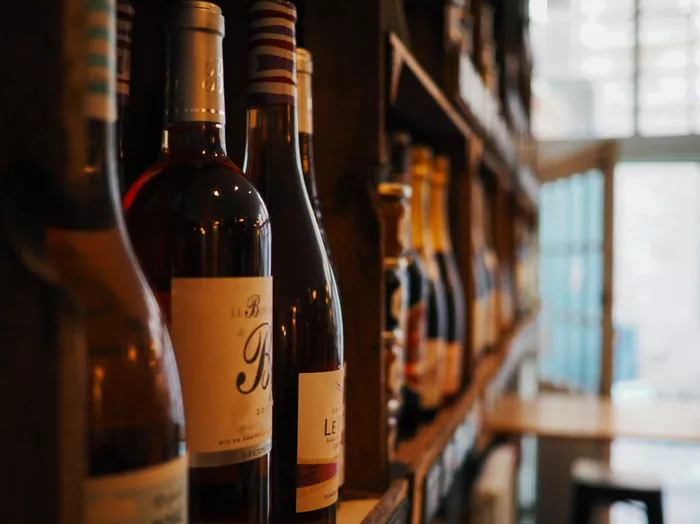Pink Champagne, often associated with celebrations and luxury, is a delightful and visually stunning sparkling wine known for its vibrant pink hue and refined taste. In this article, we’ll take a behind-the-scenes look at how this elegant libation is made, uncovering the secrets of its alluring color, taste, and craftsmanship.
1. Starting with the Right Grapes
Pinot Noir and Chardonnay: The foundation of pink Champagne lies in the choice of grape varieties. While several grapes are used, the primary ones include Pinot Noir and Chardonnay. Pinot Noir contributes red fruit flavors and color, while Chardonnay adds elegance and acidity.
2. The Pressing Process
Whole Cluster Pressing: To achieve the desired color and flavor, winemakers use a technique known as “saignée” or “bleeding.” This involves gently pressing red grape clusters, allowing the juice to macerate briefly with the grape skins, imparting color and subtle tannins. The extracted juice is then combined with white Chardonnay juice.
3. Fermentation and Blending
Separate Fermentation: The red and white grape juices are fermented separately. The red grape juice undergoes fermentation in contact with the grape skins to extract color, while the Chardonnay juice ferments separately to preserve its distinct characteristics.
Blending: After fermentation, the winemaker carefully blends the red and white wines in varying proportions to achieve the desired shade of pink and flavor profile. This blending process is a crucial step in crafting the perfect pink Champagne.
4. Secondary Fermentation
Traditional Method: Like other sparkling wines, pink Champagne undergoes a secondary fermentation inside a sealed bottle. A mixture of sugar and yeast, known as the liqueur de tirage, is added before sealing the bottle with a crown cap.
5. Aging on Lees
Aging Period: Pink Champagne is aged on its lees (dead yeast cells) for an extended period, which contributes to its complexity and creamy texture. The minimum aging requirement varies, but quality pink Champagnes often spend several years in the cellar.
6. Riddling and Disgorging
Riddling: Bottles are placed on special racks, gradually rotated, and tilted to encourage the yeast sediment to settle in the neck of the bottle.
Disgorging: The neck of the bottle is frozen, and the pressure forces out the frozen plug containing the yeast sediment. A small amount of wine and sugar, known as the dosage, is added to adjust sweetness levels.
7. Corking and Bottling
Corking: A cork is inserted into the bottle, securing the carbonation and preserving the wine’s effervescence.
8. Enjoying the Effervescence
Serving Temperature: Pink Champagne is best served chilled, typically between 45°F and 55°F (7°C to 13°C), in tulip-shaped glasses to capture its aromas.
Pink Champagne is a testament to the artistry of winemaking, where the meticulous blending of grape varieties and the precision of the winemaker create a symphony of flavors and a captivating visual experience. Whether enjoyed as an aperitif or alongside a special meal, this effervescent delight continues to be a symbol of sophistication and celebration.
FAQs about making pink Champagne:
Q1: Are all pink Champagnes made using the saignée method?
A1: No, not all pink Champagnes are made using the saignée method. While saignée is one method, another common method for producing pink Champagne is blending red and white wines. The choice of method depends on the winemaker’s goals for the final wine’s flavor, color, and style.
Q2: What is the role of the dosage in making pink Champagne?
A2: The dosage, a mixture of wine and sugar added after disgorging, serves several purposes in making pink Champagne. It adjusts the sweetness level of the wine, balances acidity, and enhances the final flavor profile. It can also play a role in fine-tuning the color.
Q3: Can you provide more details on the riddling process in making pink Champagne?
A3: Riddling is a crucial step in the production of pink Champagne. Bottles are placed in specialized racks called pupitres, and they are gradually rotated and tilted over time. This process encourages the yeast sediment to settle in the neck of the bottle, making it easier to remove during disgorging.
Q4: Are there different styles of pink Champagne, and how do they vary in taste?
A4: Yes, there are various styles of pink Champagne, and their taste profiles can vary. For example, a rosé Champagne may have a range of flavors from red berries and citrus to floral notes. Some may be drier, while others are sweeter. The specific taste depends on factors like grape varieties, winemaking techniques, and the dosage used.
Q5: Is pink Champagne always made with Pinot Noir and Chardonnay grapes?
A5: While Pinot Noir and Chardonnay are commonly used grape varieties for making pink Champagne, other grape varieties like Pinot Meunier and occasionally others may be used, depending on the winemaker’s preference and regional regulations.
Q6: Can you age pink Champagne, and does it improve with age?
A6: Yes, pink Champagne can be aged, but not all are intended for long aging. Some are meant to be enjoyed relatively young, preserving their fresh fruitiness. However, high-quality pink Champagnes from exceptional vintages can benefit from aging, developing more complexity and depth over time.
Q7: Are there famous producers or regions known for their exceptional pink Champagnes?
A7: Yes, several Champagne houses and regions are renowned for their exceptional pink Champagnes. Names like Veuve Clicquot, Bollinger, and Krug are often associated with high-quality rosé Champagnes. The Champagne region in France is the epicenter of pink Champagne production.
Q8: What are some popular food pairings for pink Champagne?
A8: Pink Champagne’s versatility makes it a fantastic choice for food pairings. It complements a wide range of dishes, including salmon, seafood, sushi, poultry, charcuterie, and even desserts like fruit tarts and macarons. Its vibrant acidity and fruitiness make it a delightful companion to diverse cuisines.


